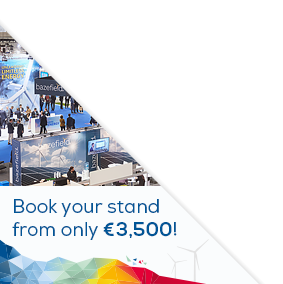Posters
Siblings:
ProceedingsProgrammeProceedingsSpeakersPostersContent PartnersElectrification StageMarkets TheatreR&I ActivitiesStudent DayProgramme Committee & abstracts reviewersPresenters dashboardCome meet the poster presenters to ask them questions and discuss their work
We would like to invite you to come and see the posters at our upcoming conference. The posters will showcase a diverse range of research topics and provide an opportunity for delegates to engage with the authors and learn more about their work. Whether you are a seasoned researcher or simply curious about the latest developments in your field, we believe that the posters will offer something of interest to everyone. So please, join us at the conference and take advantage of this opportunity to learn and engage with your peers in the academic community. We look forward to seeing you there!

PO158: Statistical comparison of the lidar measurement error of different wind lidar profilers in complex terrain
Oliver Bisschoff, Research Assistent, University of Stuttgart
Abstract
Lidar measurements are playing an increasingly important role in determining wind conditions on- and offshore due to their flexibility, mobility and their ability to measure at high altitudes. Commercial wind profiling lidars generally use the velocity-azimuth display (VAD) scanning technique to determine the horizontal wind speed and wind direction. The measurement points are located along an azimuthal orbit and the radial velocity is measured at these points. The number of measurement points depends on the actual measurement instrument, e.g. 50 for the continuous-wave Zephir ZX300 or 4 for the pulsed Vaisala Windcube. With the help of a system of equations, the horizontal windspeed is then reconstructed from the radial windspeeds. The distance between the individual measuring points of the VAD scan increases according to the altitude and depends on the aperture angle used. Therefore, the distance between individual measurement points can be up to several hundred meters. In flat terrain with homogeneous flow conditions, this circumstance is usually negligible for the determination of the 10-minute mean windspeed and winddirection, but in complex terrain with inhomogeneous flow, this can result in deviations or errors in the reconstruction of the horizontal wind speed. The influence of the different measurement strategies or devices on the lidar error in complex terrain has not yet been systematically investigated. The research project "Lidar data correction for sites in complex terrain (LoTar)" aims at that objective. For this purpose, two measurement campaigns in complex terrain are being carried out, one has already been completed, the second measurement campaign is being planned. In each campaign, a wind measurement mast is available as a reference system. In addition, several lidar systems of different types are installed next to the measuring masts. In both measurement campaigns, a Windcube V2 and a ZX300 lidar are used in addition to other devices.







